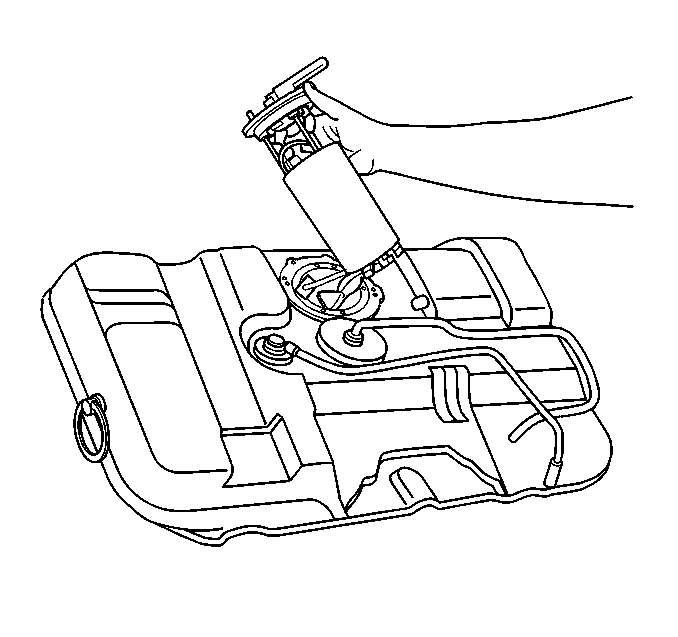Removal Procedure
Caution: In order to reduce the risk of fire and personal injury that may result from a fuel leak, always replace the fuel sender gasket when reinstalling the fuel sender assembly.
Notice: Do Not handle the fuel sender assembly by the fuel pipes. The amount of leverage generated by handling the fuel pipes could damage the joints.
Notice: Cap the fittings and plug the holes when servicing the fuel system in order to prevent dirt and other contaminants from entering the open pipes and passages.
Important: Always maintain cleanliness when servicing fuel system components.
- Disconnect the negative battery cable. Refer to Battery Negative Cable Disconnection and Connection in Engine Electrical.
- Relieve the fuel system pressure. Refer to the Fuel Pressure Relief .
- Drain the fuel tank. Refer to Fuel Tank Draining .
- Remove the fuel tank. Refer to Fuel Tank Replacement .
- Remove the fuel sender assembly retaining nuts (1), the retaining ring (2), the fuel sender assembly (3), and the gasket (4). Discard the gasket.
- Clean the gasket sealing surfaces.

Caution: Drain the fuel from the fuel sender assembly into an approved container in order to reduce the risk of fire and personal injury. Never store the fuel in an open container.
Installation Procedure
- Position the new gasket on the fuel tank.
- Carefully fold the strainer to allow it to fit through the opening in the fuel tank. Make sure the strainer unfolds once it is placed in the tank.
- Install the fuel sender assembly into the fuel tank.
- Install the fuel sender retaining ring (2).
- Reinstall the fuel sender assembly retaining nuts (1).
- Reinstall the fuel tank. Refer to Fuel Tank Replacement .
- Add fuel.
- Reinstall the fuel filler cap.
- Connect the negative battery cable. Refer to Battery Negative Cable Disconnection and Connection in Engine Electrical.
- Inspect for leaks.
Important: The fuel pump strainer must be in a horizontal position when the fuel sender is installed in the tank. When installing the fuel sender assembly, assure that the fuel pump strainer does not block full travel of the float arm.

Notice: Use the correct fastener in the correct location. Replacement fasteners must be the correct part number for that application. Fasteners requiring replacement or fasteners requiring the use of thread locking compound or sealant are identified in the service procedure. Do not use paints, lubricants, or corrosion inhibitors on fasteners or fastener joint surfaces unless specified. These coatings affect fastener torque and joint clamping force and may damage the fastener. Use the correct tightening sequence and specifications when installing fasteners in order to avoid damage to parts and systems.
Tighten
Tighten the fuel sender assembly retaining nuts alternately and evenly
to 6.5 N·m (58 lb in).
| 10.1. | Turn ON the ignition for 2 seconds. |
| 10.2. | Turn OFF the ignition for 10 seconds. |
| 10.3. | Turn ON the ignition. |
| 10.4. | Check for fuel leaks. |
